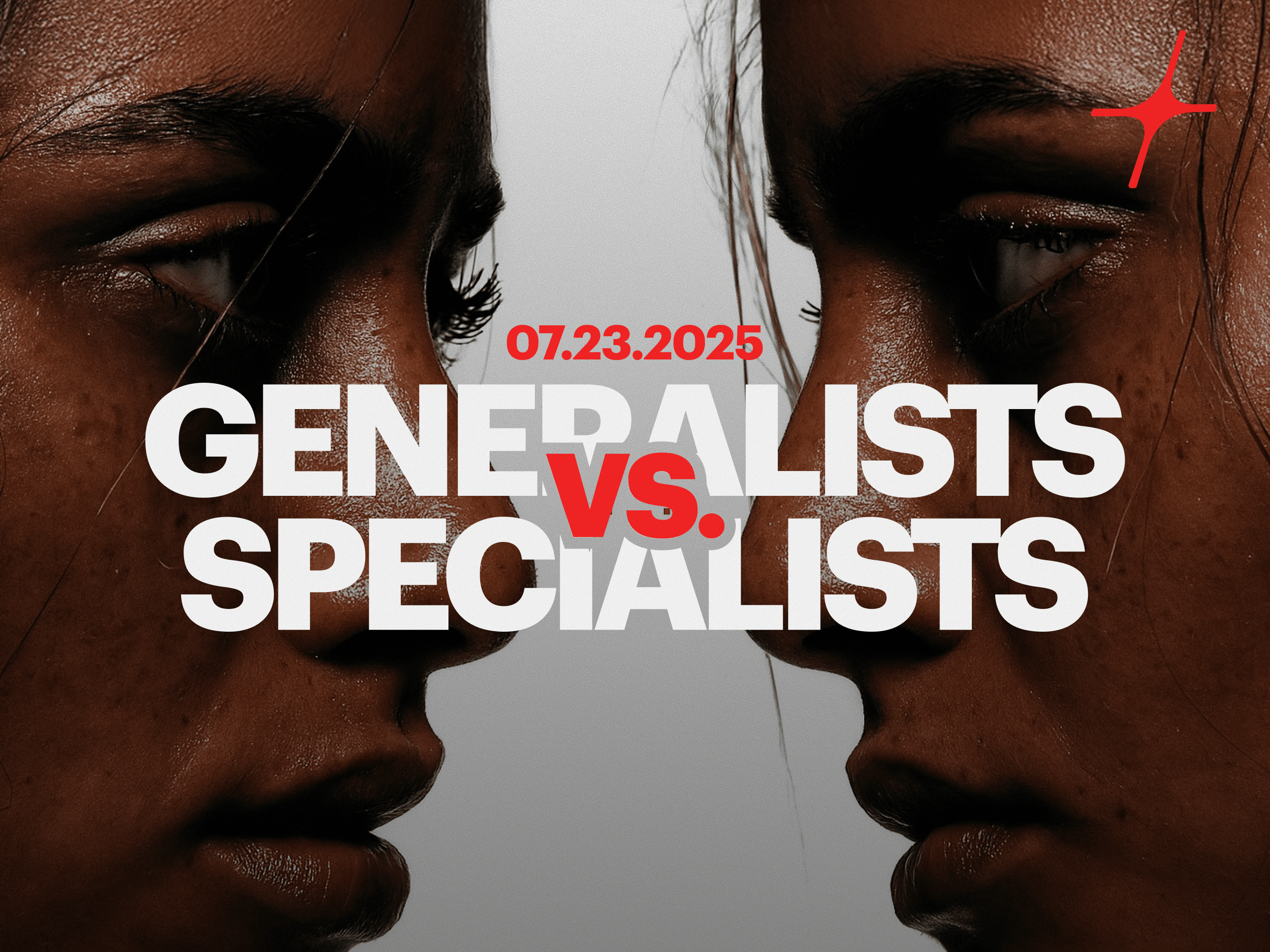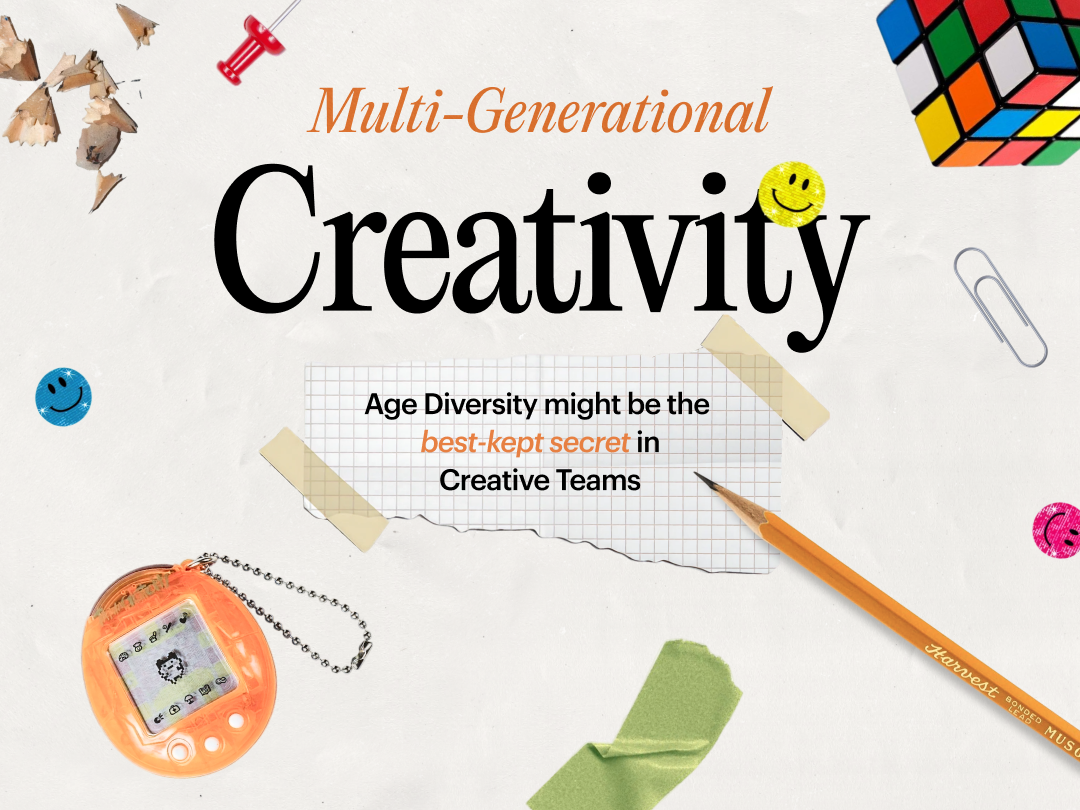Generalists vs Specialists
July 23, 2025
For years, the design world encouraged us to specialize. Be the motion expert who never touches type, or the UX designer who leaves the visuals to someone else. The brand designer who doesn’t get near code or doesn’t even care to consider the devs. That path made sense: the more focused you were, the deeper your expertise, the clearer your niche.
But today, the creative ecosystem feels like it is shifting. Teams are becoming smaller, budgets are tighter than ever. Deadlines are faster (oh! we have loads of opinions on this). Many studios and startups can’t hire a specialist for every task, they need people who can flex, connect disciplines, and make the whole feel coherent. In this environment, is the age of the generalist returning?
There are strong arguments in favor of generalists, when tools converge, so do roles. Think about how Figma now blends design systems, prototyping, and collaboration. Webflow now pretty much allows designers to build live without handoff. When the software combines functions, it helps to think and work across boundaries. A generalist mindset can make you faster and more adaptable in this space.
When tools converge, so do roles.
Generalists can also see the big picture, because come to think about it a brand isn’t just a logo. It’s a system of visuals, voice, motion, and interaction that has to work together across every platform. Specialists bring depth to individual pieces, but generalists often make sure those pieces fit. They spot gaps, connect dots, and help the work feel whole.
At the same time, there are solid reasons to value specialization. The complexity of modern design challenges means deep skill is critical in many areas. If you’re building an accessibility-first platform, you want a specialist in inclusive design. If you’re animating for AR, you want someone who’s immersed in that world. Specialization pushes the boundaries of craft in ways generalists often can’t.
Specialization pushes the boundaries of craft.
There’s also the risk that generalists stretch too thin. Trying to cover too much can mean being surface-level across the board. Some teams value that versatility. Others want people who go deep, mastering the nuances of one area so they can innovate in it.
Maybe it’s not about picking a side. The strongest teams might be the ones that combine both: specialists who go deep, generalists who connect the dots, and a shared respect for both roles. The best designers might be those who know when to narrow their focus and when to widen their lens.
So the question is: Are generalists making a comeback or are we just redefining what it means to be a strong designer today?
Here’s how you can reflect and act on your own behalf:
1. Map your skills. Where do you go deep? Where do you flex?
2. Pair with someone outside your focus on a project this month.
3. Try a short course or tutorial that nudges you just beyond your core discipline.
In the end, it’s not about the label. It’s about how you contribute, connect, and create.
Peace.


